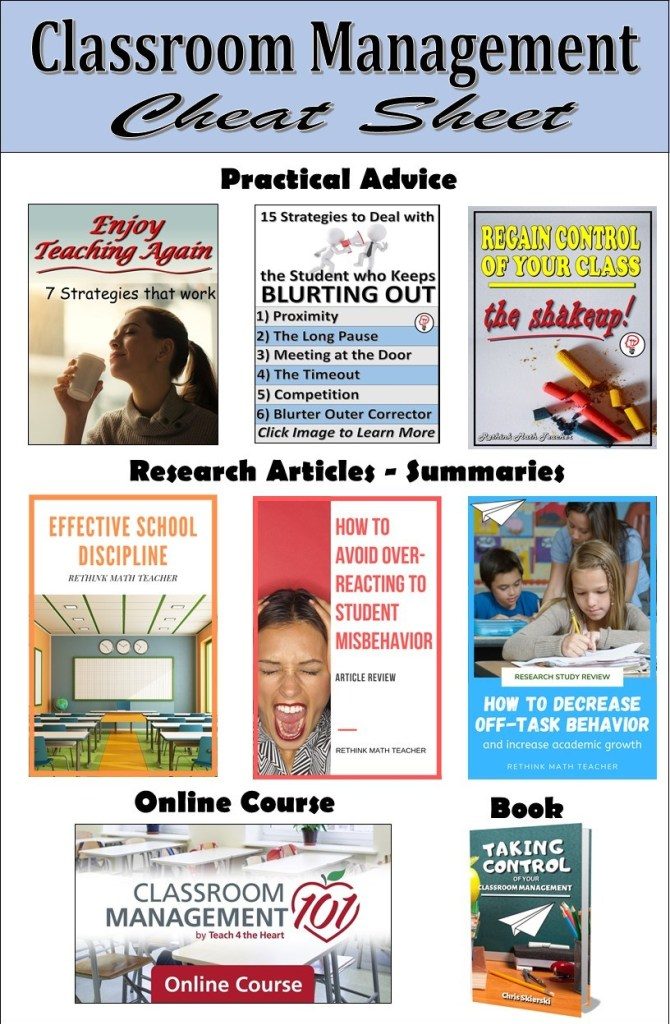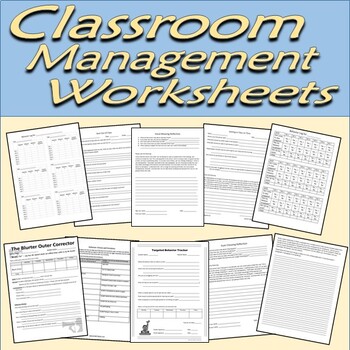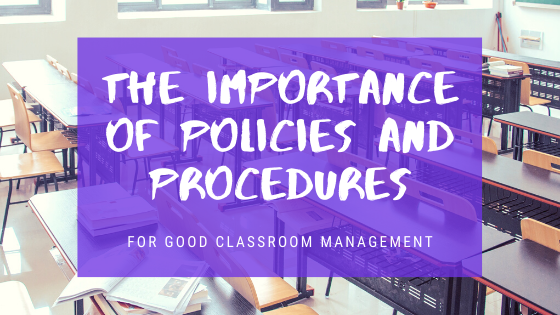
for Good Classroom Management
I used to be an administrator at a middle school where students were lumped together all day.
Though they switched classrooms each period, visiting different teachers for different subjects, it was the same group of students together all day in every class.
Despite your thoughts on this grouping, it produced one interesting result that’s fruitful for our discussion on classroom management. That interesting phenomenon was how the same group of students would act very poorly for one teacher, and then be angelic for another.
What caused the same group of students to be absolutely off-the-walls crazy in one class and then more citizens in the next?
Obviously, the answer is Classroom Management. But why does one teacher have it, and another doesn’t?
What it’s not
I’ve had teachers tell me that it’s easier for a certain type of person to have good classroom management (like men, or old people, or a certain ethnicity).
I disagree. Anyone can have good classroom management.
I’ve seen little old ladies and quiet young men both have excellent classroom management. I’ve seen teachers of all colors, shapes, and personalities control their classrooms.
What’s Their Secret?
Different things work for different teachers. So it’s key to play to your strengths.
But there’s one thing I’ve noticed that all teachers with good classroom management have: policies and procedures
When students enter the room, they know what’s expected. They behave a certain way because they’ve been taught to behave that way through policies, procedures, and reinforcement
One Great Way to Improve Classroom Management
If your classroom management needs improvement, the first place you should look is at your policies and procedures. Your class needs a routine, and expectations, for everything!
- How they enter the room
- How they pass out papers
- How they ask to go to the bathroom
- How they turn in work
- How they ask for help
- How they sharpen a pencil
…everything!
Here’s why policies and procedures improve classroom management…
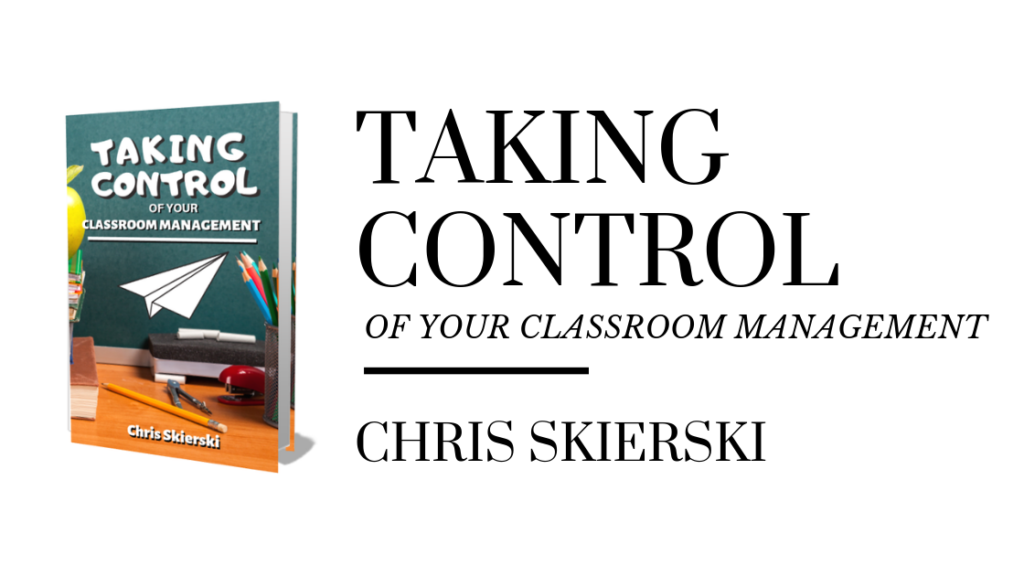
1 – Students Know What to Expect
When there are policies, procedures, and routines in place, students know what to expect. This reduces anxiety and increases their ability to adhere to expectations.
Believe it or not, students like to know what’s going on, and what’s supposed to be happening. And if proper expectations aren’t in place, students will struggle to conform.
Knowing what to expect helps students know how to behave.
2 – Reduces Likelihood of Incidents
I once mentored a teacher who was struggling with incidents in her class. After observing her teach several times, it was clear that the incidents emanated from students getting up and walking around the room without permission.
A student needed to sharpen his pencil, so he’d get up and walk over to the sharpener while the teacher was teaching. As he walked towards the sharpener, he’d stop and talk to his friends, or someone would hand him a note, or two others would walk over to the sharpener to talk to him.
As soon as the teacher set the boundaries about when students were allowed out of their seats, all the incidents dramatically decreased.
When students know where the boundaries are, they’re less likely to break them. They’re also more likely to feel safe since they have confidence that everyone else will also be behaving as expected.
Policies and procedures reduce the likelihood of an incident
3 – Stop Issues Before they Start
I sat in Ms. Powers’s class, bewildered at what I was witnessing. Johnny wanted to use the restroom, so he stood up and walked over to the door where the sign-out sheet and key were. To his frustration, the key was gone, so he stood by the door waiting for the student with the key to return. Ms. Powers continued teaching.
As he stood by the door, Abigail began talking to him from across the room, but he couldn’t understand. After several failed attempts, she walked over to him to let him know that she believed that she was next in line for the restroom. Ms. Powers continued teaching.
As they argued, a third student came over to settle the argument. Their noise now dominated the sound in the room and Ms. Powers was forced to ask what was happening. They all pled their case before her. Several other students in the room began weighing in to help arbitrate.
Just then, Turnisha returned with the key. Johnny and Abigail blitzed her, and wrestled for the key. Abigail prevailed, took the key, and went to the restroom. Johnny pouted, letting his frustration show. Several of Johnny’s friends came to console him. Ms. Powers continued teaching.
How did it get so bad? How could students be wrestling in her class? Why did they think it was okay to have a whole-class conversation about whose turn it was to use the restroom instead of listening to their teacher?
The answer is that there were no procedures in place. Thus, the students were left to their own vices. Ms. Powers needed a routine for how students were to ask to use the restroom, and how she managed the list when there were multiple students needing to go. She also needed a routine for how to behave when she was talking – for example, getting out of your seat and talking to your neighbor should not have been allowed.
4 – Easy to Enforce Expectations (Positive and Negative)
One of my policies is that when students enter the room, they need to walk directly to their seat and begin working on the Bellringer (class has begun the moment they cross the threshold).
So when a student chooses to enter the room and walk to another student’s desk to have a conversation, it’s easy to identify the misbehavior and correct it.
It’s also easy to know when students are behaving appropriately and to praise them.
5 – No Confusion
How many times has a student gotten in trouble and said, “But everyone else was doing it?” Or, “but I wasn’t the only one talking.”
Before you go disparaging the students who say these things, I’ve had teachers use the same arguments. I’ve seen teachers be told to stop talking during a Principal’s presentation who responded, “I’m not the only one talking.” And I’ve seen similar responses when teachers were out of dress code. “Did you see Mr. Todd? How come he got to wear this and that?”
We all make these rationalizations. I’m guilty of it myself.
Instead of marginalizing students for this misbehavior, recognize that it’s human nature, and help your students by setting clear policies and procedures and enforcing them.
6 – Boundaries Help Children Feel Safe
I’ve heard of a study (I don’t know if it’s true) that consisted of a group of young people being placed in an environment for free play that had no boundaries. The students stayed close together and play was limited.
Yet when the same students were placed in a similar environment that included boundaries, they felt free to explore. They quickly moved to the perimeters, tried new things, and participated in more free play.
Again, I don’t know if such a study ever occurred, but I have observed that students perform better, and enjoy their class more, when boundaries are in place. They feel safe, they know what’s expected, and thus more learning happens.
And with all that increased learning time and decreased incidents, everyone has more positive sentiments towards class.
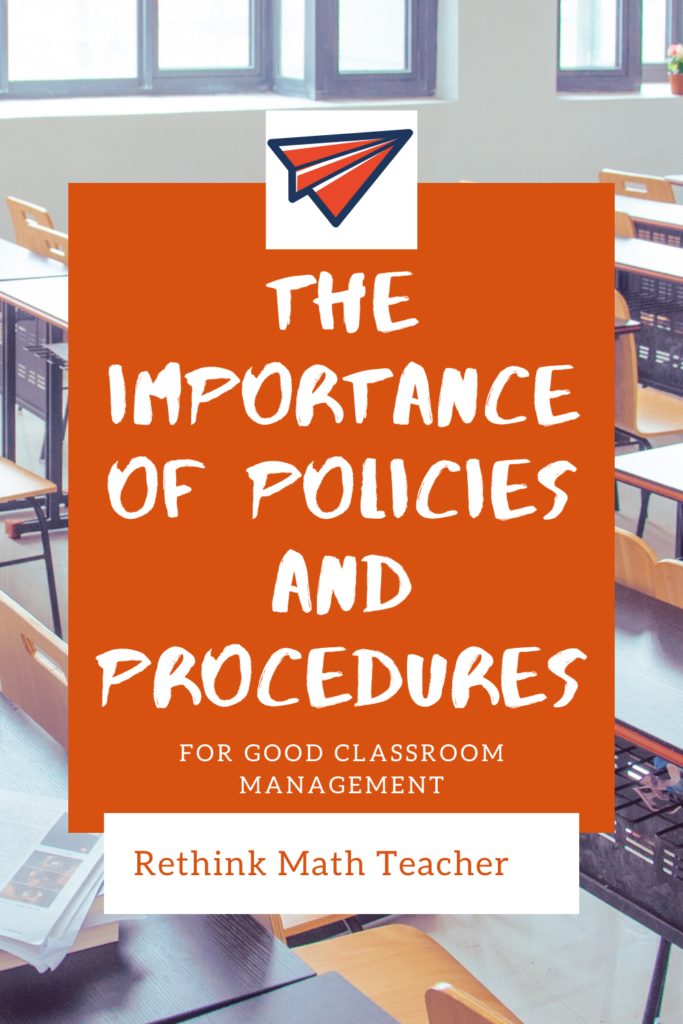
Conclusion
There needs to be a policy for EVERYTHING!
- Go to the bathroom
- Sharpen your pencil
- Ask a question
- Get out of your seat
- Pass in papers
- Turn in your work
- Head your paper
- And on and on the list goes.
Think through everything that happens (and try to think of everything that could happen) in your class, and develop a policy or procedure for it.
Then start thinking through consequences. What will you do when someone breaks the rule (intentionally or unintentionally).
Want Some Help?
Developing Policies and Procedures?
I have a worksheet for teachers to help them develop their policies and procedures. The worksheet lists many of the things that happen in class that you need to consider when you develop your policies and procedures (like the items listed above).
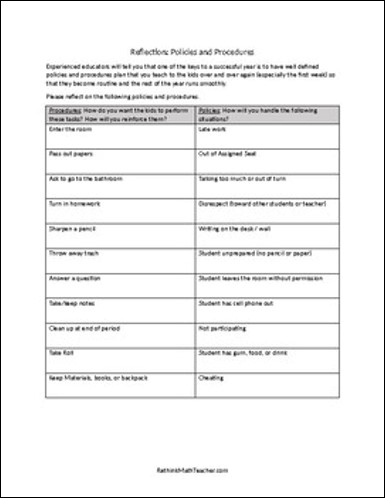
Click Here
This is available in my TpT store, but is free when you purchase my book on classroom management.
It is also part of a larger resource pack, full of classroom management worksheets, which is also free when you purchase the book.
Creating Your Policies and Procedures
If you’re asking yourself, what should my policies and procedures be? What are the most important? Or if you’re not sure how to implement them, or what the consequences should be, I STRONGLY RECOMMEND my book, “Taking Control of Your Classroom Management.”
In the book, I will walk you through the 5 foundational policies you must put in place to be successful. I will also walk you through many other procedures in your classroom and discuss with you some possible policies you could put in place as well as give you many ideas for how to handle misbehavior.
This book is available in Soft Cover as well as a Digital Download on TpT.

What to Read Next?
- Tips for Calling Parents
- Improving Classroom Management through Social Contracts
- Adjusting Student Behavior Through Measurable Goals
- Implementing Your Classroom Procedures
- How to Avoid Over-reacting to Students
- How to Decrease Off-Task Behavior
- The Uncommon Teacher Challenge
- 7 Positive Behavior Reinforcement Strategies

